It's easy to install full extension drawer slides with this unique, no-math method! On the very first try, you can have perfect sliding drawers - without all the hassles and head scratching.
What's the Big Secret?
It's simple. We build the drawer box in place.
Instead of measuring and building a drawer box and hoping it fits, we simply build it in place, measuring and cutting as we go.
That combined with some insider tips, you'll be creating drawers that slide perfectly on the first try on YOUR first try.
This method is designed to work with the most popular type of drawer slide, the "full extension" or "ball bearning" drawer slide, usually stainless steel in color and available just about anywhere.
What are Full Extension Drawer Slides?
Full extension drawer slides as referred to in this tutorial are
- Side mount
- Usually silver metal in color
- Full extend from the cabinet so the entire drawer slides out of the cabinet
- Smooth ball bearing glide
- Most common drawer slide at hardware stores and online
- Usually come in even sizes (10", 12", 14" etc)
- Can be "heavy duty" meaning can hold heavy loads
- Can be used for purposes beyond drawers (extending tables, sliding furniture, pullout hook bars etc)
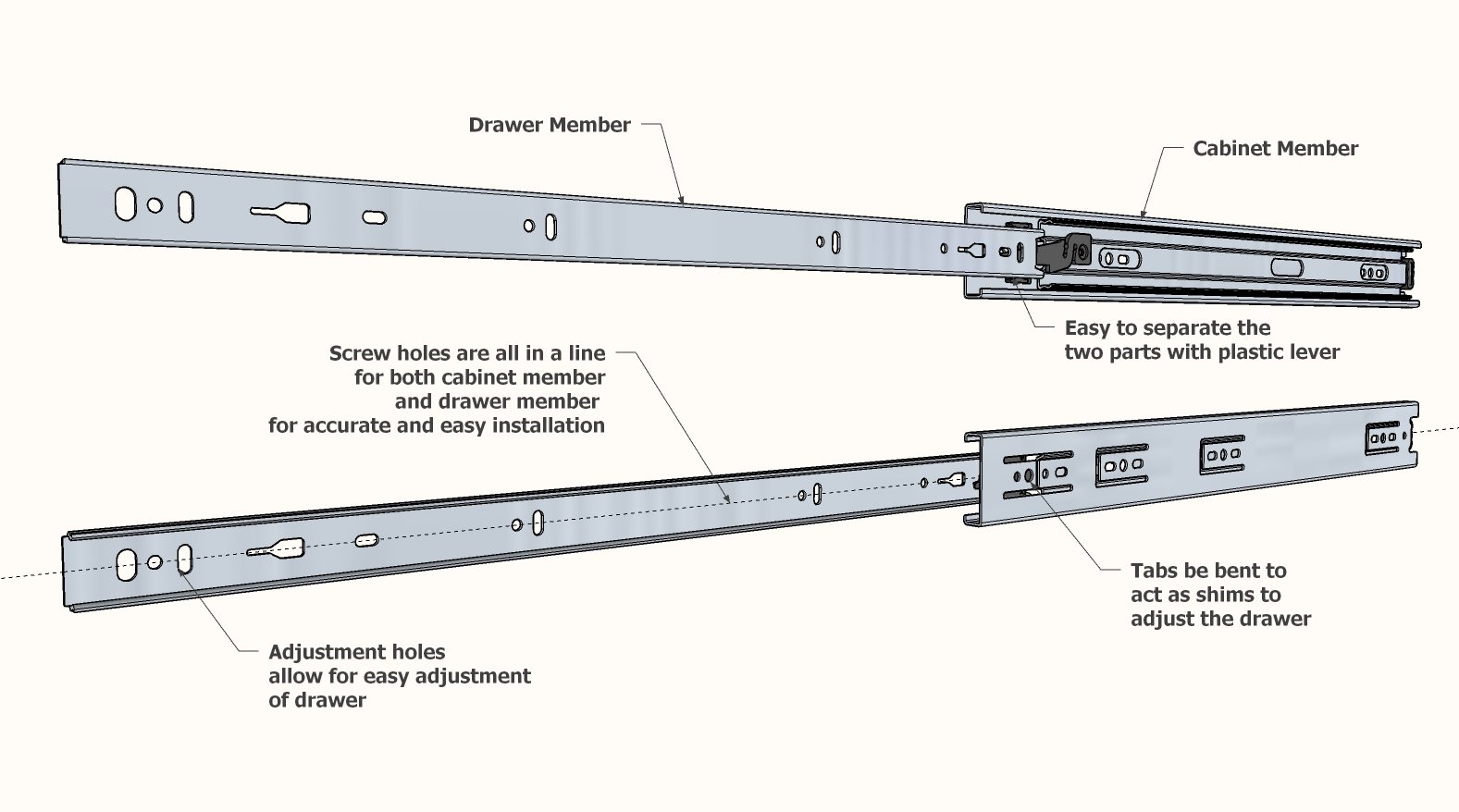
Video of Installing Drawer Slides
In this video, I walk your though my method as I install a drawer in my kitchen using full extension drawer slides.
Step-By-Step: How I Install Drawer Slides
If you prefer reading and diagrams, I've also put together a step by step of my drawer slide installation method.
1. Prepare the Cabinet
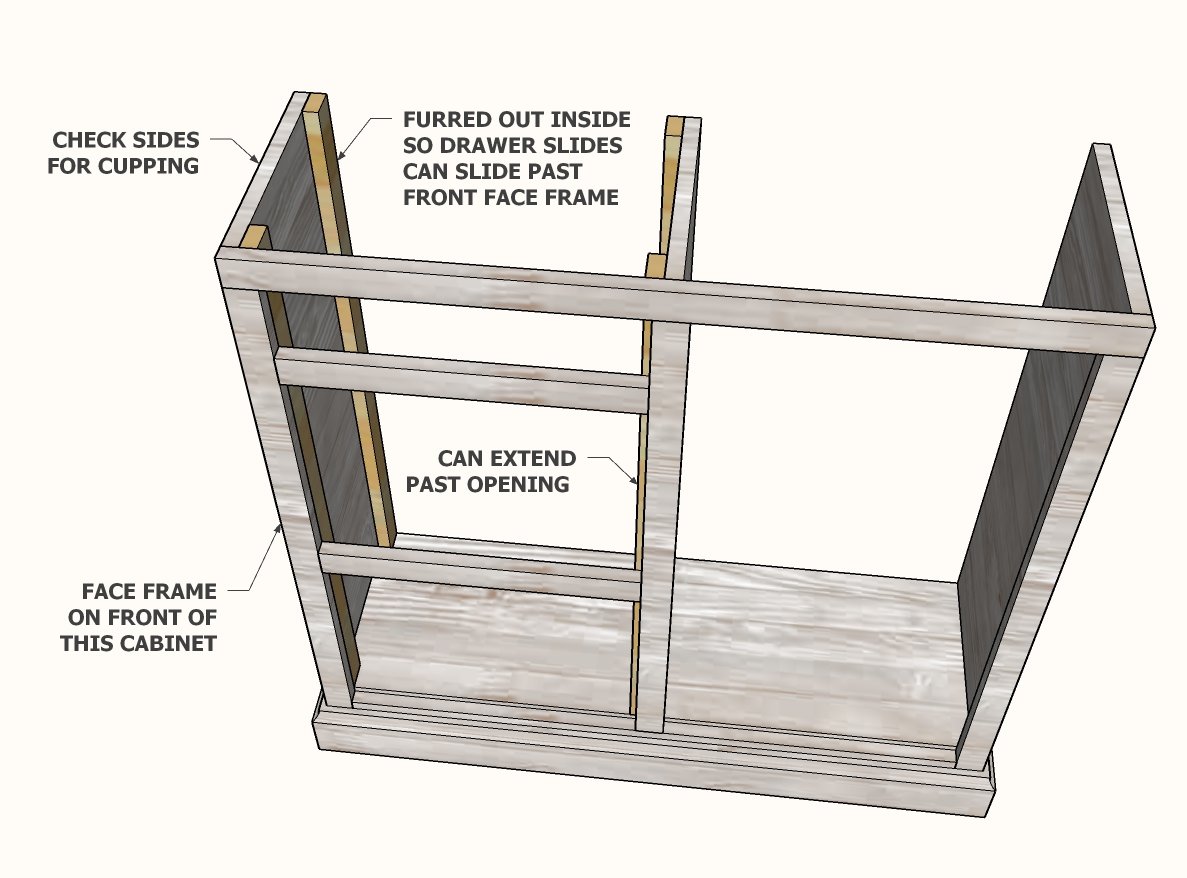
- Avoid drawers over 3 feet wide - as drawers will get wobbly as they slide, and may sag when too large.
- Make sure the cabinet is "square" on the inside - meaning the interior of the cabinet is NOT a trapezoid or parallelogram shape.
- If installing directly to the cabinet insides, look out for any cupping of the cabinet sides, where the drawer might get pinched as it slides in - this is especially common when solid wood is used to build the cabinet, and the 1x12s boards (or similar) warp and cup inward or outward.
- If the cabinet has a face frame, legs that go all the way up, or other detail that will keep the drawer slide from sliding out the front, fur out the inside of the cabinet. You do NOT need to fully support the drawer slide so the entire inside of cabinet does NOT need to be built inward.
- If furring out the cabinet interior, make sure the furring strips are located where your drawer slides can be screwed to them.
2. Install Cabinet Members in Cabinet
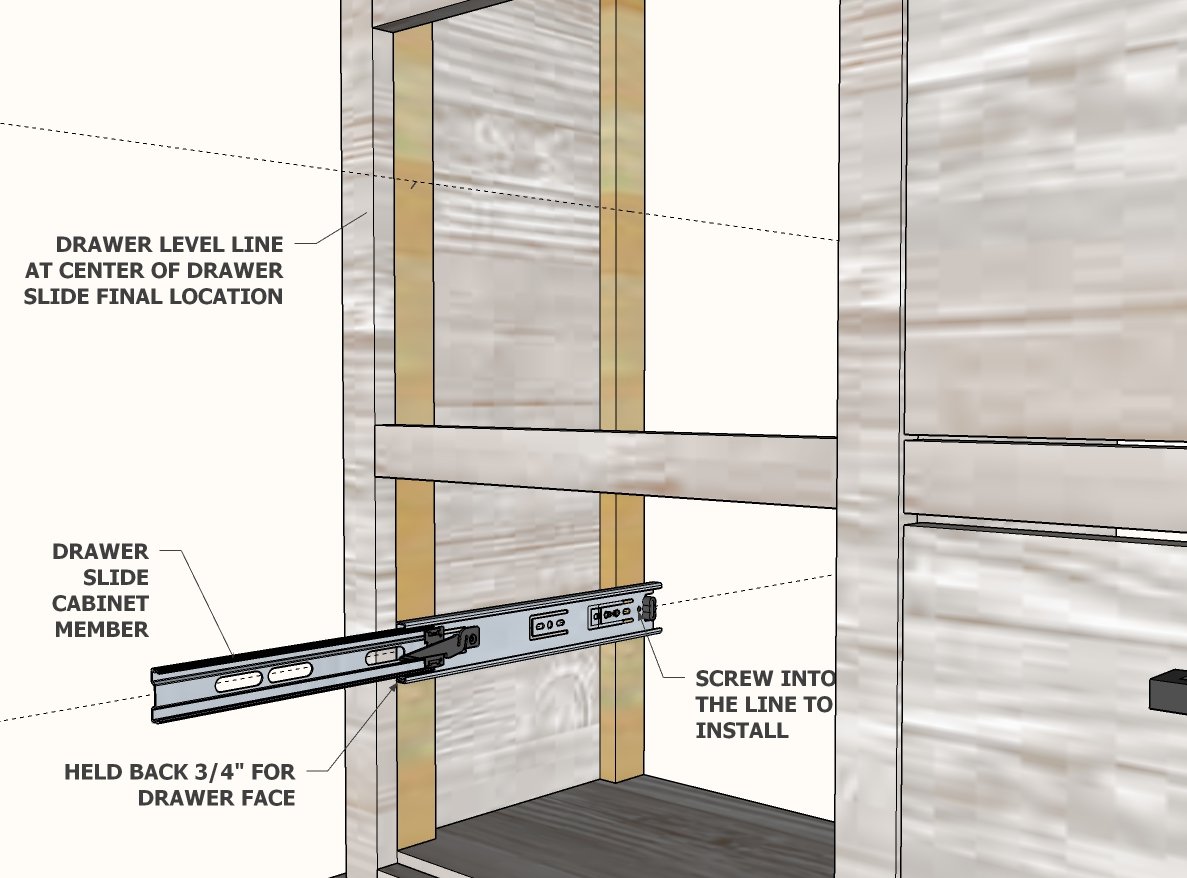
- Notice how the screw holes for both the cabinet member and the drawer member are all in a line, centered on the drawer slide? So all we need to do is draw lines where we want the center of the drawer slides to be, and screw into our lines.
- Determine where you want the center of the drawer slide and make a mark. This can vary depending on where you want your drawer or how deep the drawer is. I do like to keep my slides close to where the drawer pull or handle is located when possible.
- Use a level to draw a line on the inside of the cabinet from your marks. Make the same line on both sides of the inside of the cabinet.
- Install the cabinet member of the drawer slide so screws are centered on your line.
- Use the screws inside the U shaped tabs if possible, as this will give you some adjustment if needed later.
- Inset Drawer Faces: Hold the drawer slides in the distance of your drawer face on the front, if using a drawer face.
- Overlay Drawer Faces: The drawer slides should be installed just slightly back from the front of the cabinet.
FAQ: How long should the drawer slides be?
I like to buy the longest drawer slides that will fit in the cabinet with some wiggle room.
3. Install Drawer Members on Drawer Side Boards
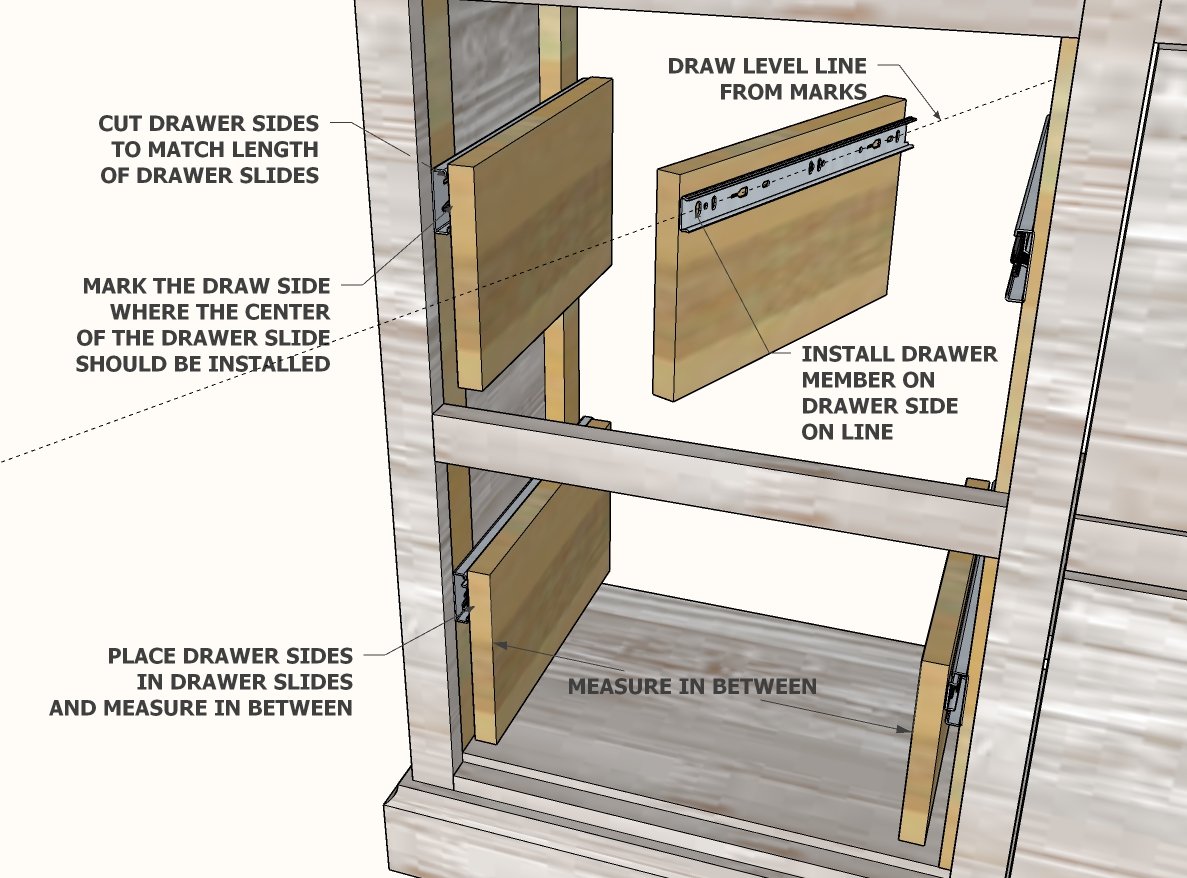
- Cut drawer sides to match the length of your drawer slides.
- Place the drawer side board where it needs to be installed in the cabinet, and mark the center location of the drawer slide on the board. Repeat for both sides.
- Draw level lines on the drawer side boards, parallel to the top edge of the drawer side board
- Install drawer member on the drawer sides, screws into the line
- Once the drawer slides are installed on the drawer sides, insert into the cabinet member and make sure the sides slide good.
- Take a measurement in between the sides at the front and back, cut the drawer front and drawer back to equal the smaller of the two measurements. It's better to build on the smaller side than too large.
FAQ: What type of material do I use for the drawer box?
You can use a variety of materials, the easiest is off the shelf 1x boards, for example 1x6 boards. You can also use plywood ripped into strips or finger joined lumber (a great choice for dimensionally stable drawers).
4. Finishing the Drawer
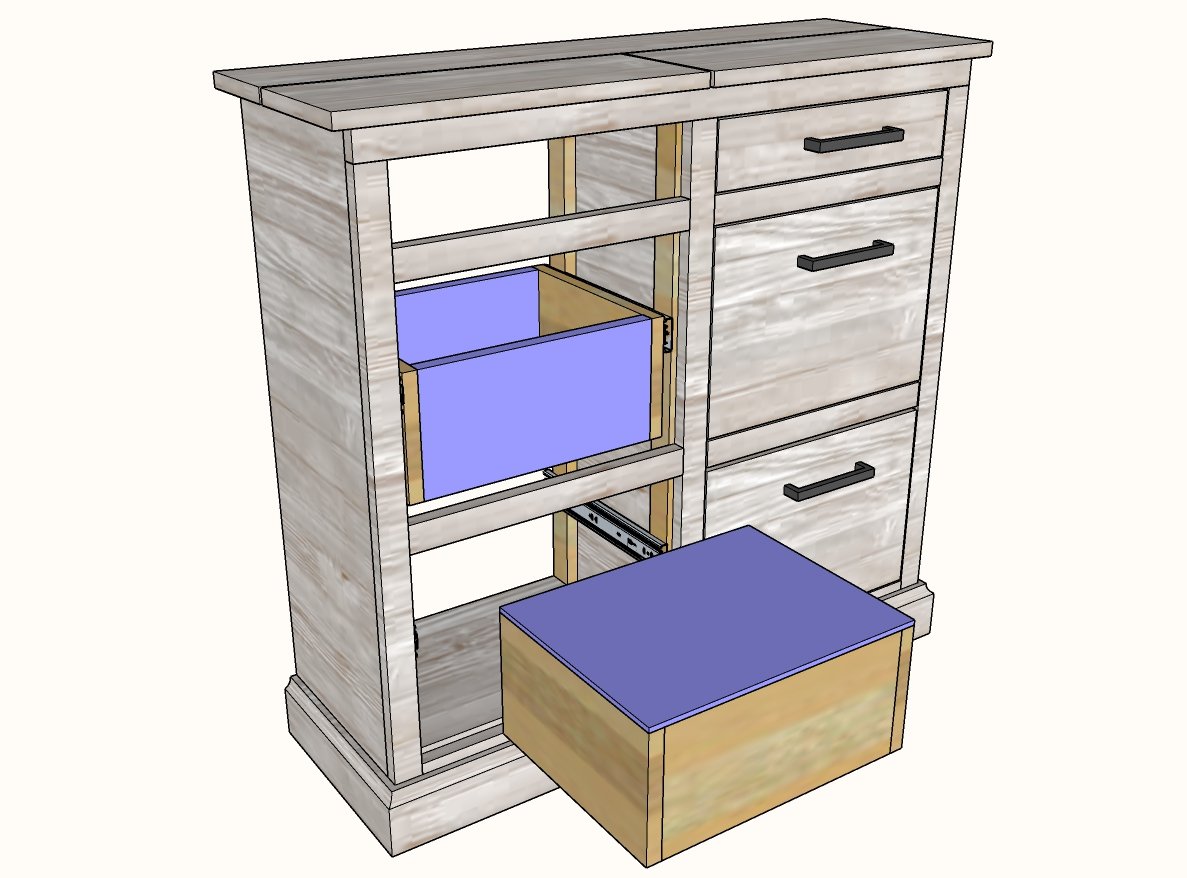
- Build the rest of the drawer box by attaching the front and backs to the sides. I prefer pocket holes, but you can also use nails and glue or ~2" self tapping construction screws.
- Attach the bottom to the drawer sides and front and back. I normally use 1/4" plywood with 3/4" brad nails and glue.
- For bigger drawer bottoms, you can use 3/8" plywood and 1" staples and glue.
- Make sure the bottom is attached square to the drawer.
- Replace the drawer in the cabinet and make sure it slides perfect.
5. Adjusting Full Extension Drawer Slides
If your drawer is NOT sliding as you'd like, you can make adjustments as long as the drawer is smaller than the opening. A too large drawer has to be cut down in size.
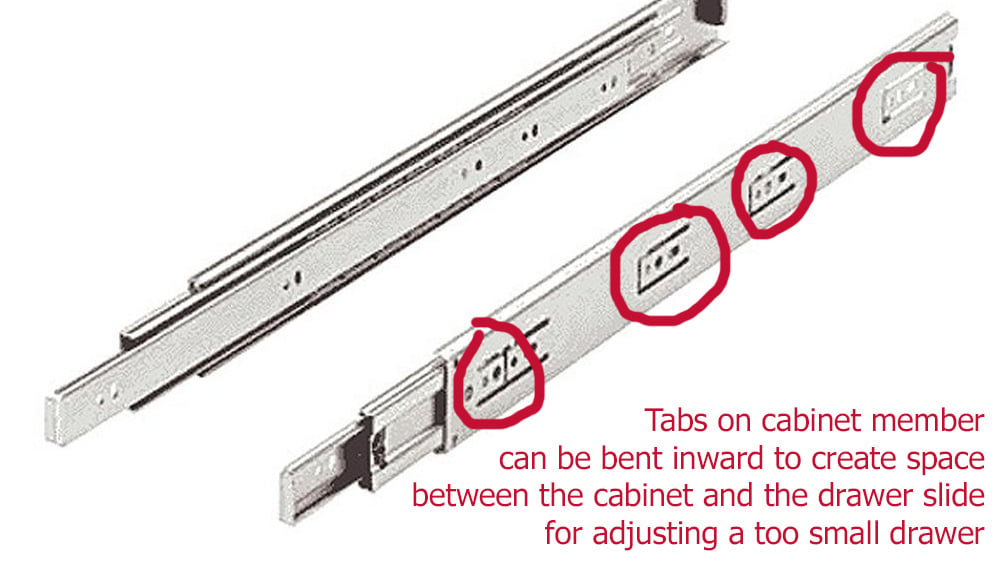
- Full extension drawer slides have tabs that can be bent outward to create space between the drawer slide and the cabinet.
- If possible, look at the bottom of the drawer and how it lines of with the drawer slides, and check where the drawer is not square to the cabinet
- Bend the tabs to shim the drawer slides
- Adjust until the drawer slides perfectly.
- If the drawer is binding vertically, loosen screws on drawer members and adjust the drawer up or down until it slides perfectly.
6. Drawer Face
A drawer face is used to clean up the front of the cabinet and fully enclose the interior. It is not essential to the function of the drawer, but can dress up the cabinet and make it finished.
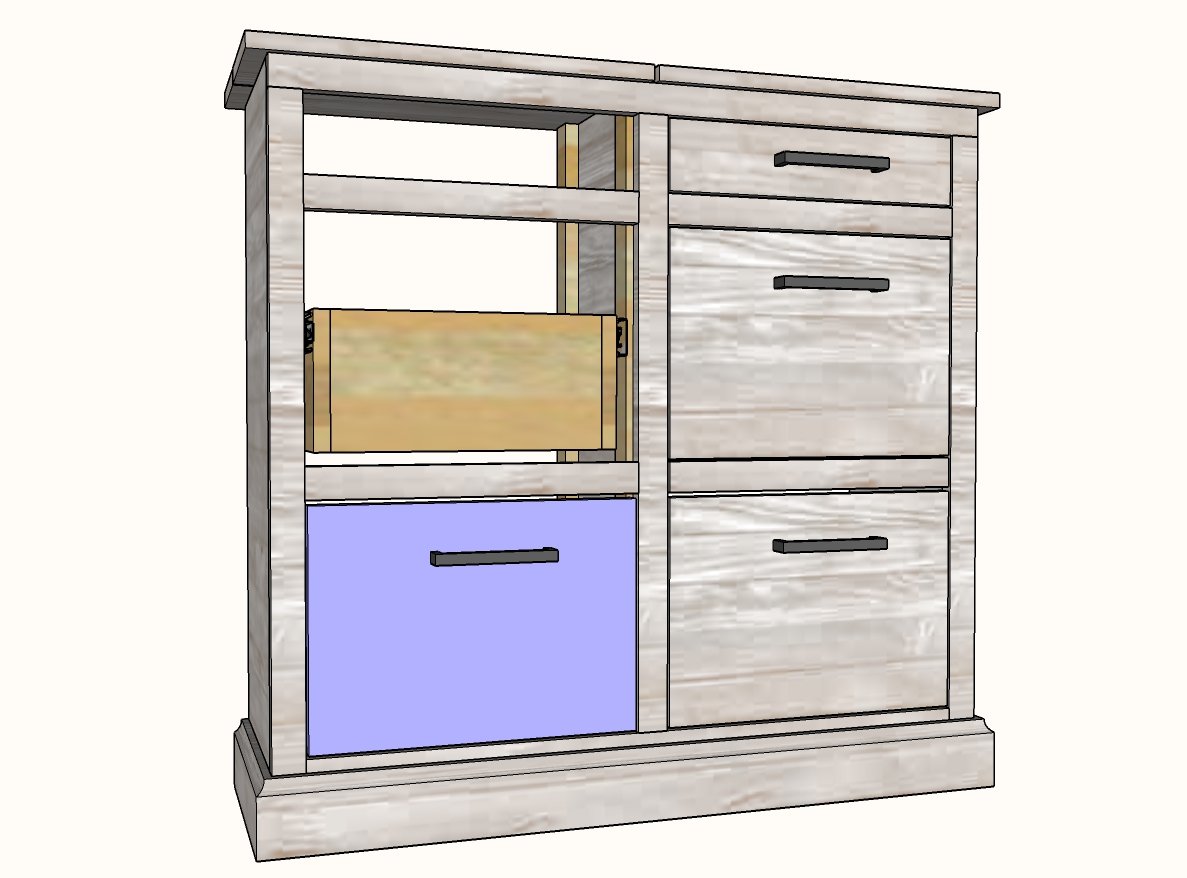
- Cut the drawer face to the desired size. For inset drawers, I like to leave about an 1/8" gap all around the drawer face.
- Drill holes for the hardware in the drawer face.
- Position the drawer face over the drawer box and attach with temporary screws through the drawer hardware holes. If you can't use the drawer hardware holes, you can use double sided tape or 1-1/4" brad nails.
- Open the drawer and further screw the box to the back side of the drawer face with 1-1/4" screws (you can use pocket hole screws)
- If you screwed through the hardware holes, remove the screws and finish installing the cabinet hardware.
I hope this tutorial helps you install drawers easier, faster and better. If you have any tips that help you, please leave below in the comments.
Thank you and Happy Sliding!
Ana
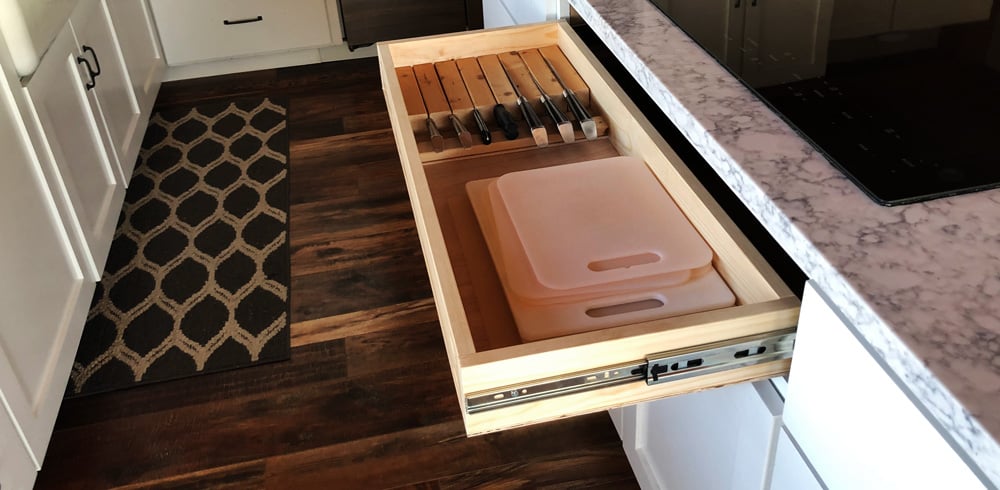
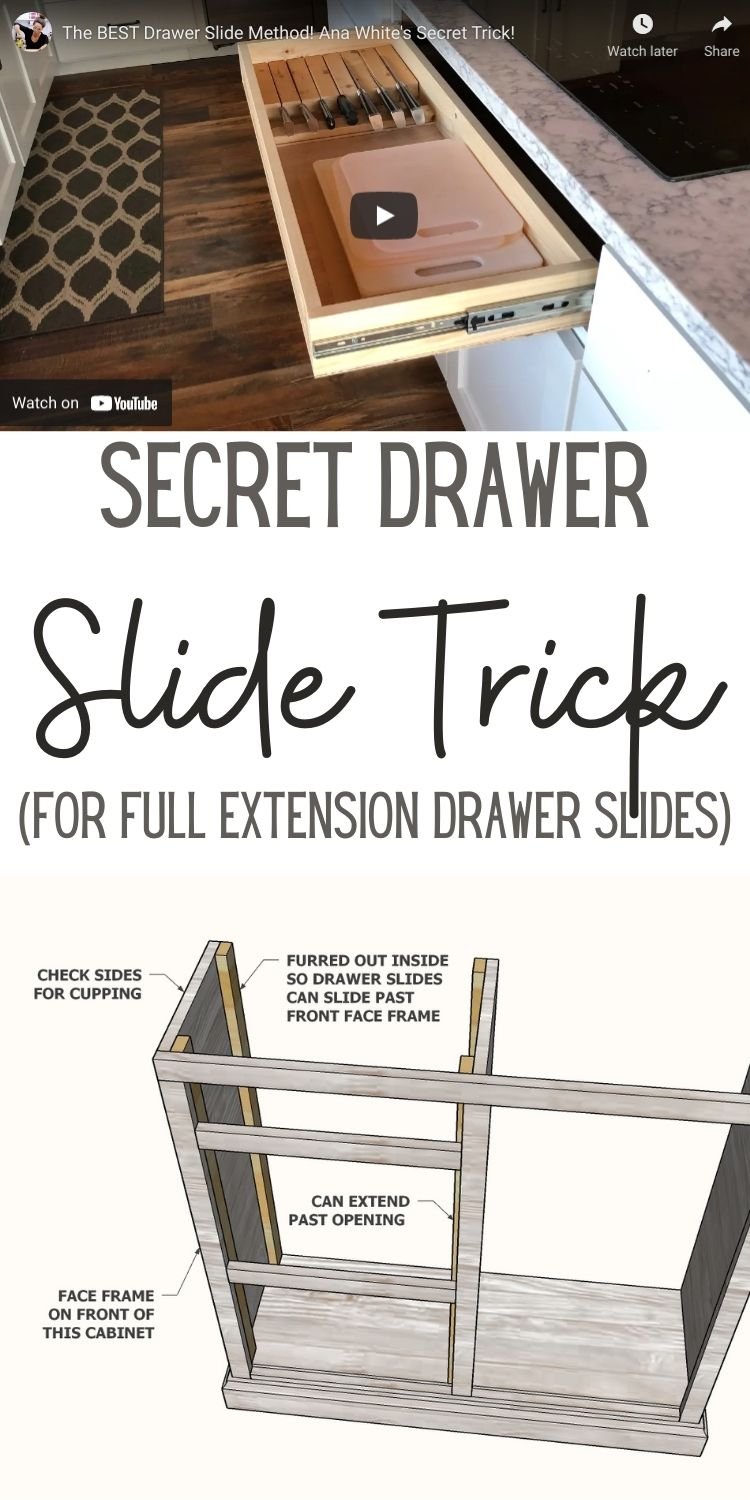
Comments
Papajohn-Philly
Tue, 02/25/2020 - 13:14
Drawer Slides - Thank you!
Thank you Ana. I'm building an end table and was just ready to tackle the drawer and glides. You showed me an easier and almost foolproof way to do it that will save me hours of frustration. Many thanks!
p.s. I've followed many of your plans over the past several years and love them all.
Thanks, JohnD
tdqueenroy
Mon, 11/15/2021 - 11:26
You’re the best Ana!
Ana, I’ve been using plans from your site and have always succeeded with the great detail, but this drawer slide tutorial is life changing! One of these days I’ll have to start bragging on your site! Thanks so much! By the way, love your kitchen!
saltdogj
Sat, 08/06/2022 - 18:35
This makes things so much…
This makes things so much easier to understand.